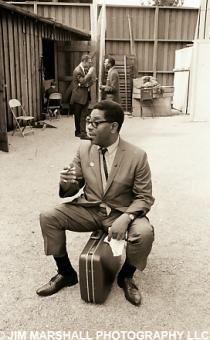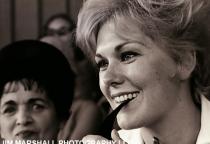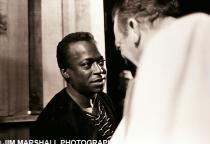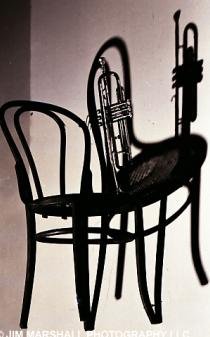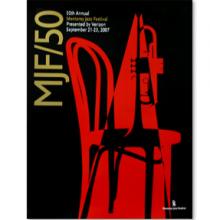By 1963 Jim was living in NYC and enjoying one of his most productive periods as a photojournalist, specializing in documenting all genres of entertainers and beyond. However, the Monterey Jazz Festival of that year managed to lure him back home to Northern California with the prospect of once-again serving as the festival’s official photographer. Jim had been the official photographer at the 1960 festival as well, which I focused on in the these past two blogs:
Monterey Jazz Festival, 1960
More Monterey Jazz Festival, 1960
It seems back in the day the Monterey Jazz Fest organizers were simpatico with Jim’s all-encompassing approach to documenting the festivities ... and it's a good thing because I can practically hear the expletives that Jim would have unleashed with anyone who might have dared to question his need for absolutely unlimited access.
The ability to freely go where he wanted, when he wanted, with whom he wanted was an unfettered status that Jim would continue to demand (with varying results) for the rest of his career and his life. He was quick to point out to me that the ONLY people who could refuse him were the artists themselves, which almost never happened. He always looked so proud of that fact; he used to say he felt that earning that level of trust and access were the only testaments to his talent that he would ever really need. And let’s not forget that by 1963 Jim was beginning to make a name for himself in the photography world, his reputation building on his full-frame results, his tenacity and timing, his vision, his knowledge of the importance and historic connections propelling the entertainment industry (including but not limited to music) … as well as his soon-to-be infamous hair-trigger temper.
Philip Elwood, who from 1965 to 2002 covered jazz, blues and all manner of music and nightlife for the SF Examiner initially and then the combo Examiner/Chronicle, wrote the introduction to Jim’s wonderful 2005 book of black and white images, “Jazz” . He manages to capture the essence of Jim’s approach to shooting jazz artists quite aptly in the following excerpts: “It’s not a coincidence that most of the pictures in this [book] were taken in recording studios, rehearsal halls, backstage areas, festival grounds, or home living rooms.
“Marshall often admits his lifelong enthusiasm for not just getting a ‘how’r ya’ from a performer but, rather, becoming a backstage friend—hanging out with musicians, getting to know them and their colleagues, and often, developing a friendship with their families. His photos radiate with this informal, friendly intimacy—they are like family snapshots. “To know Jim Marshall and observe him at work, Leica M4 [Editor’s note: or Leica M2 depending on the year] in hand, paraphernalia nearby or dangling from his shoulder, can be both fascinating, unnerving, and occasionally entertaining in itself. “More than once at avarious venues I have seen ushers, burly guards, stage managers, and concert impresarios—all with (perhaps) an even shorter fuse than the tempestuous Marshall—attempt to remove Jim from the stage. Of course, these efforts are most often unsuccessful; Jim never just stands by the stage-lip waiting for shots to appear.” In today’s post, I’ve decided to present Jim’s shots from everywhere but the stage or its lip at the Monterey Jazz Festival of 1963. Next time we will focus on the the music played and perhaps a bit more from around the edges. Enjoy!
- Jim Marshall Photography LLC Newsroom blog
- Log in to post comments
